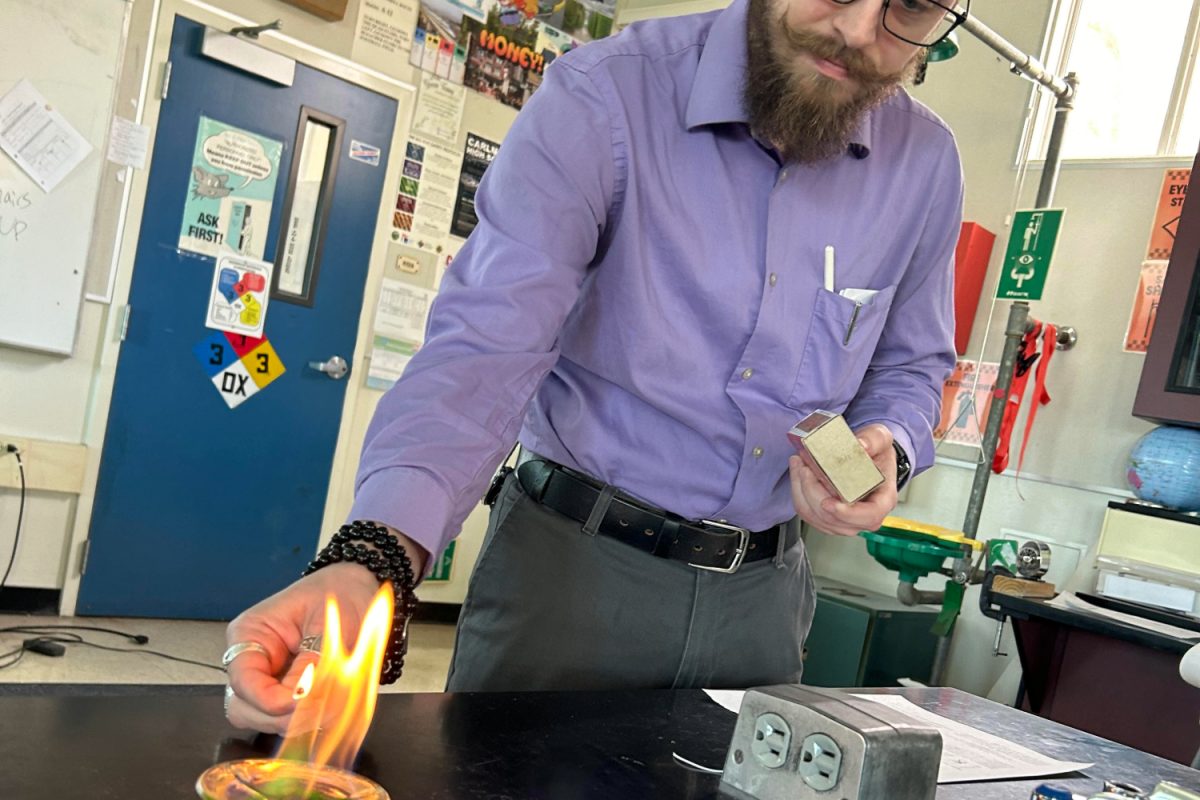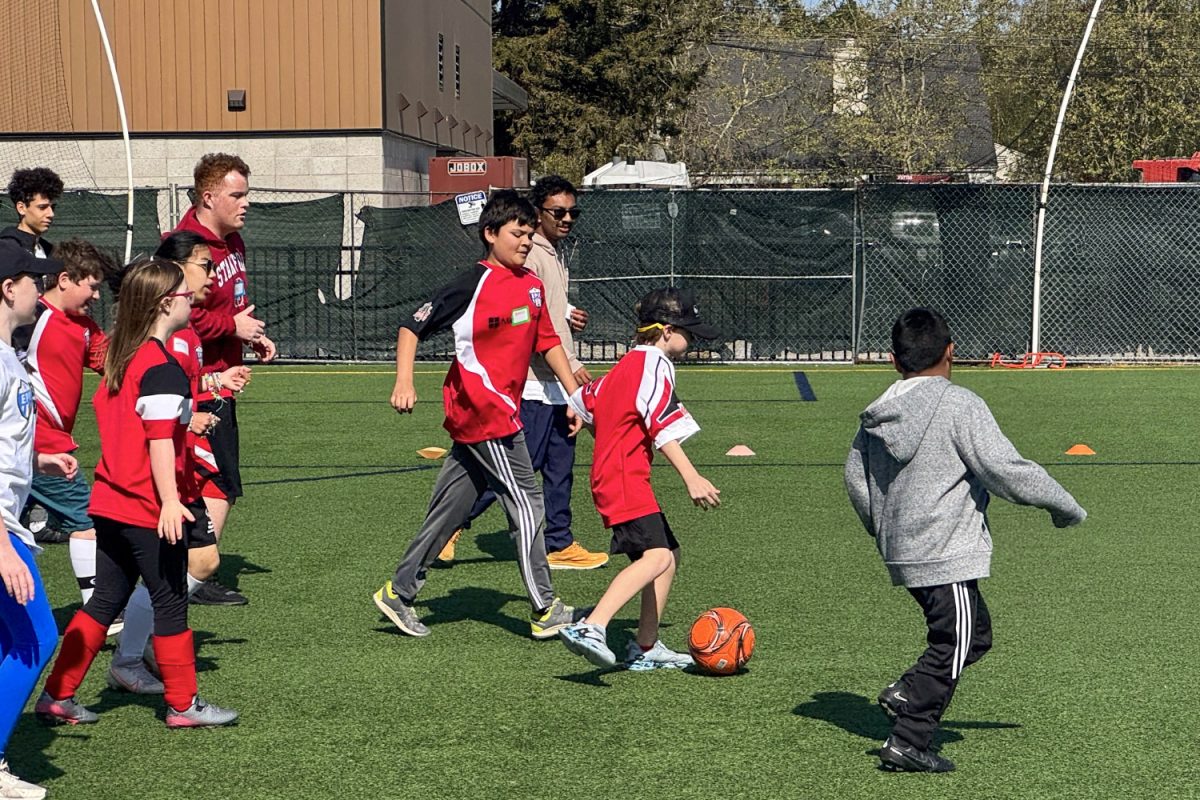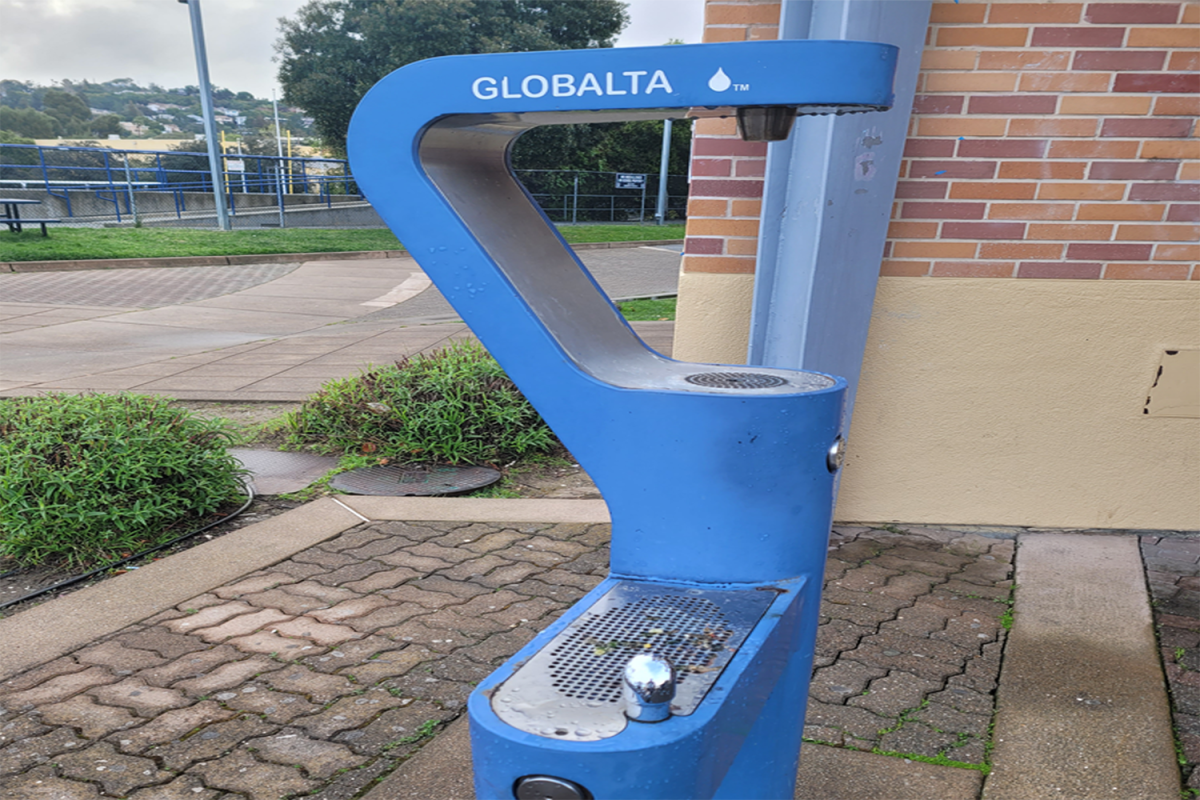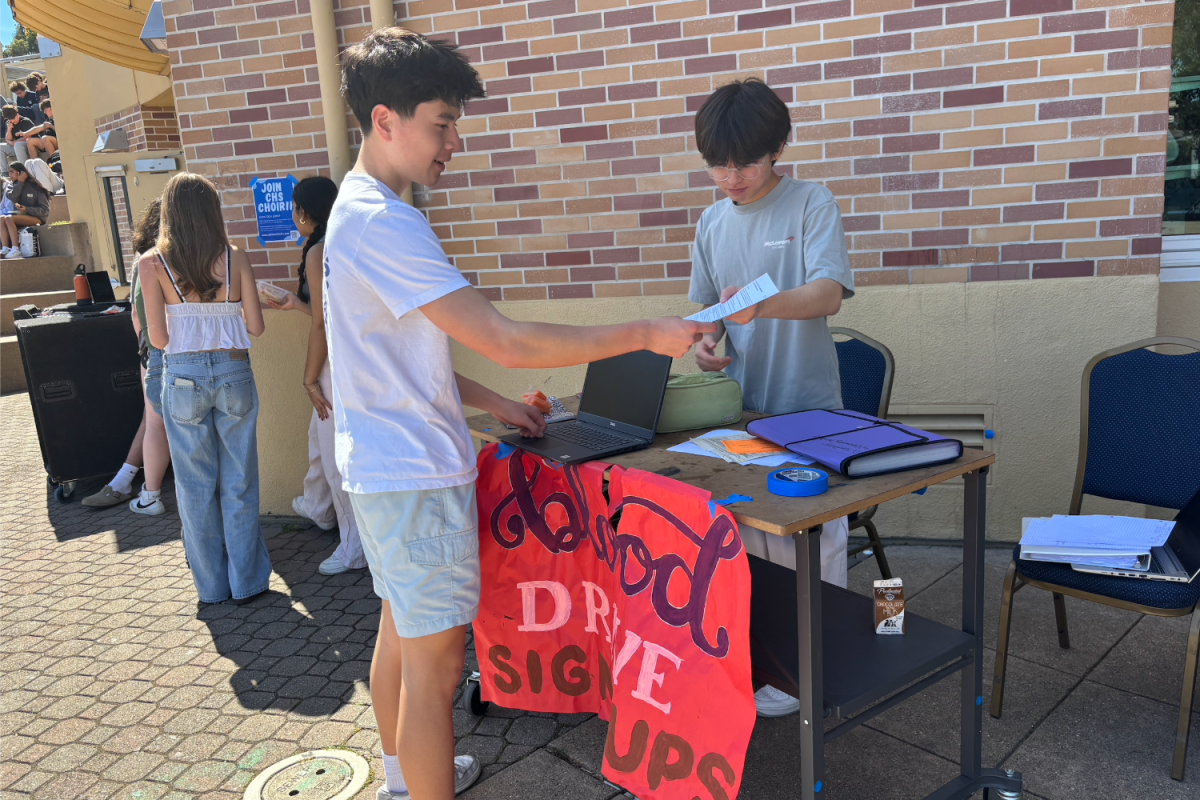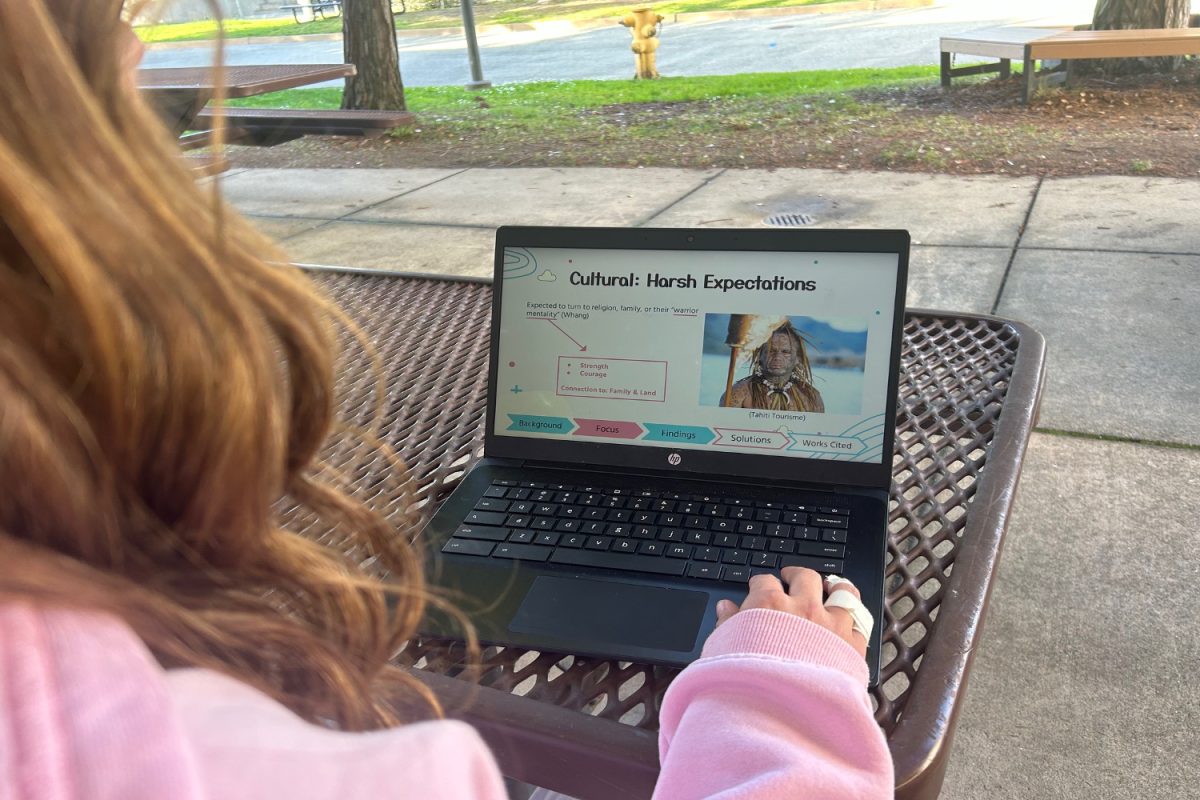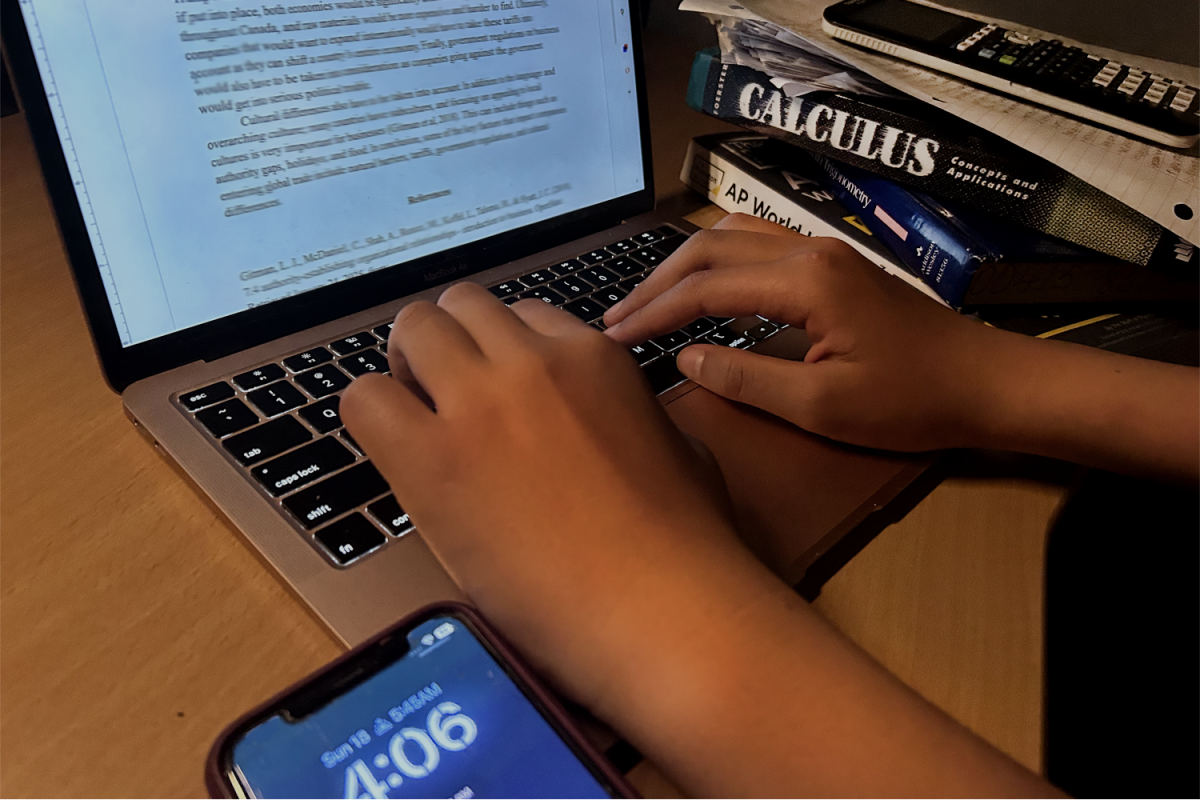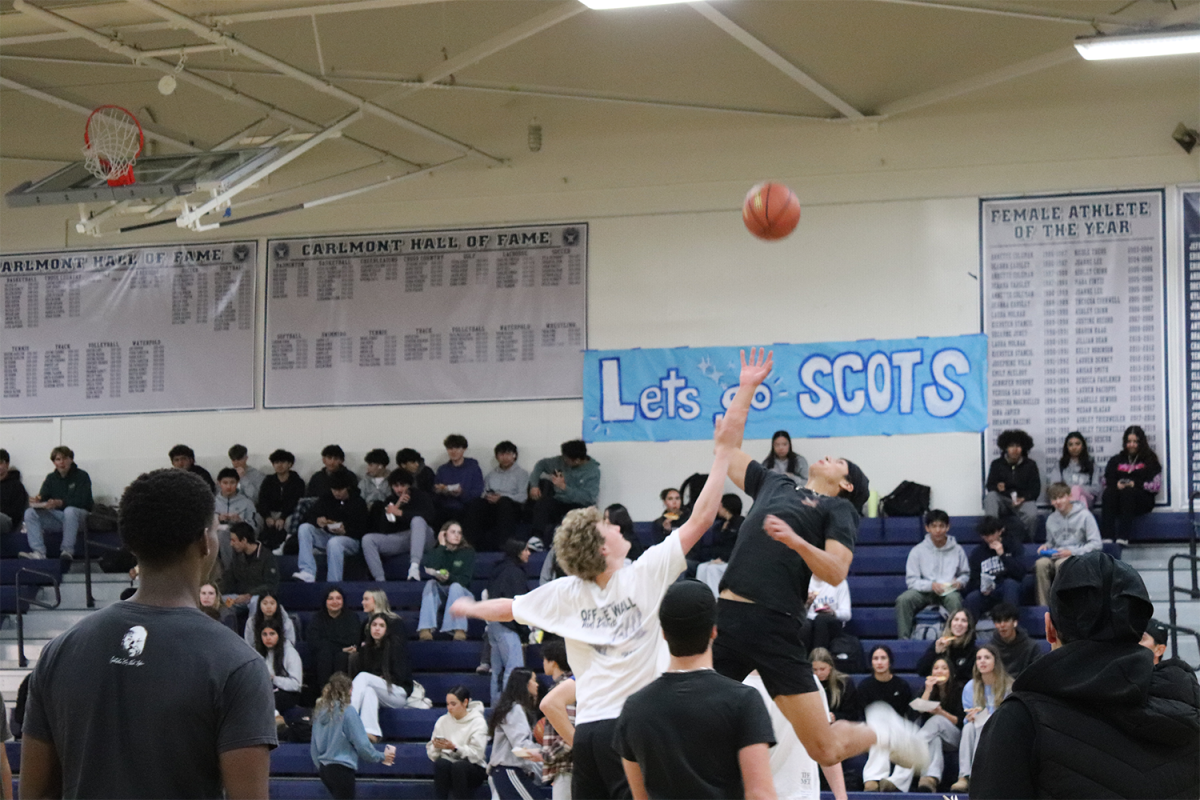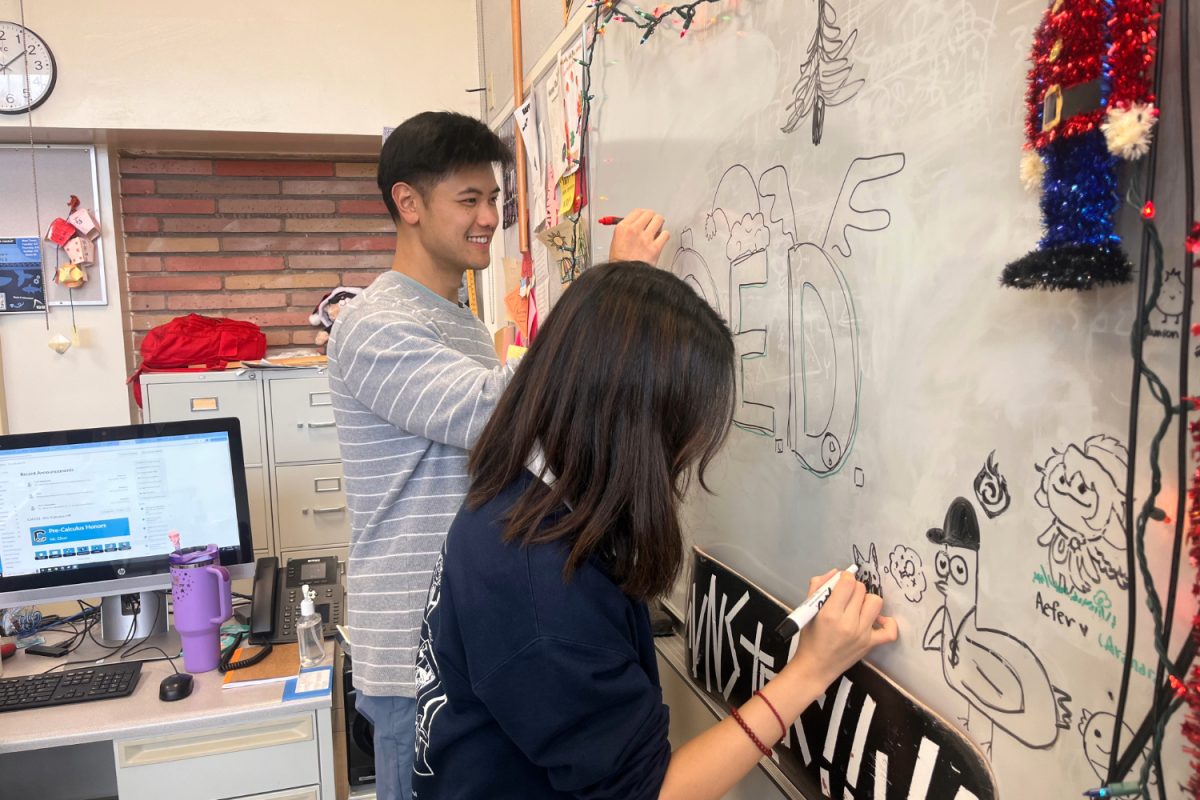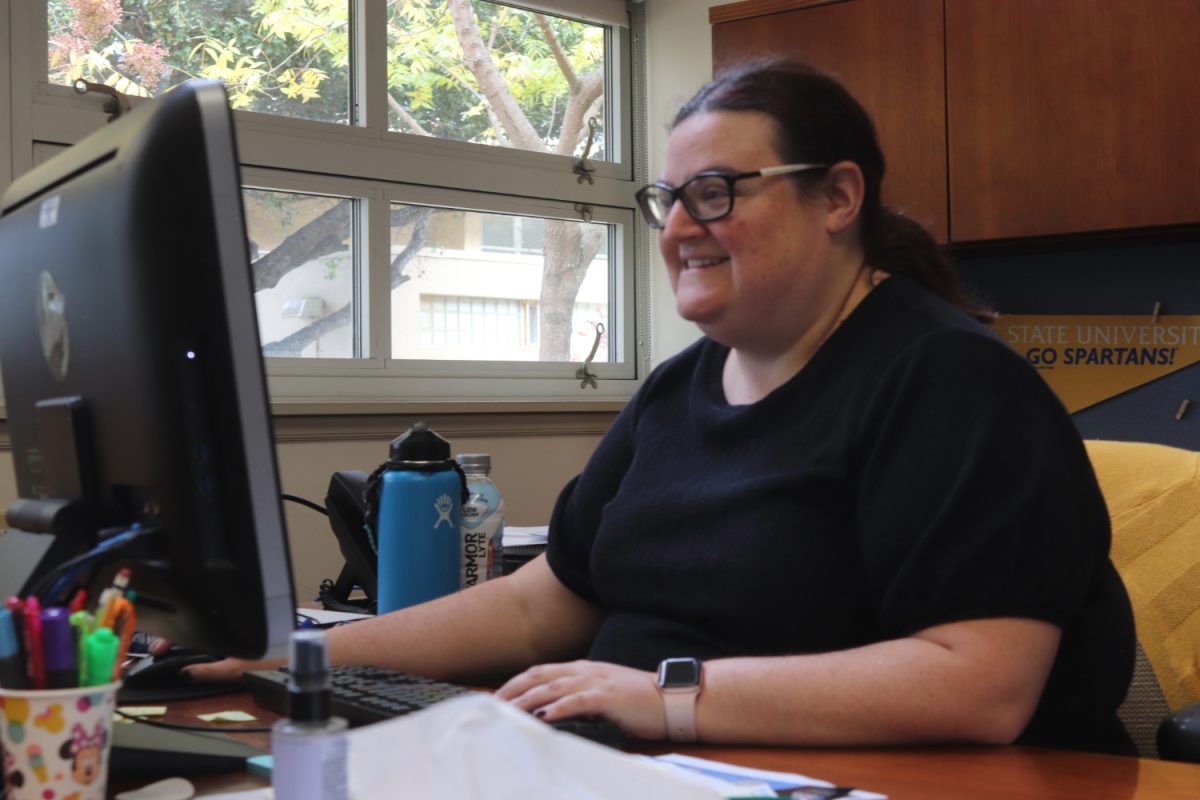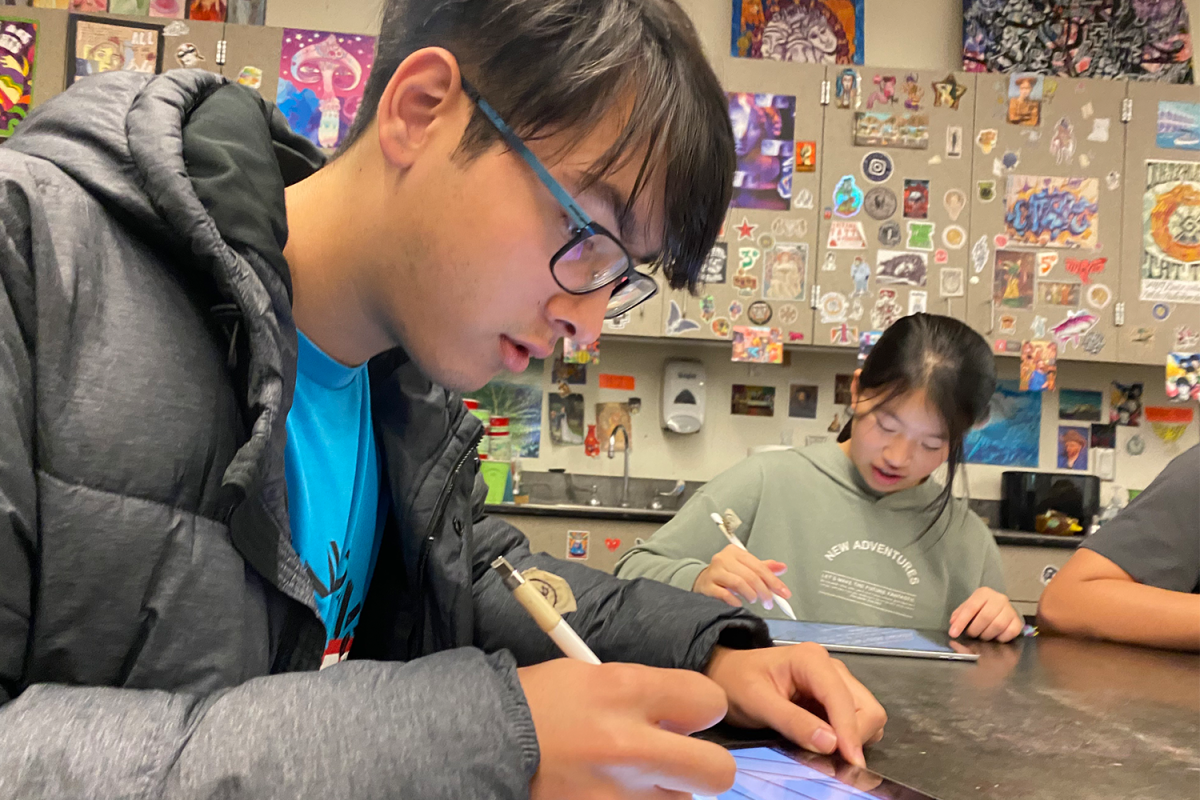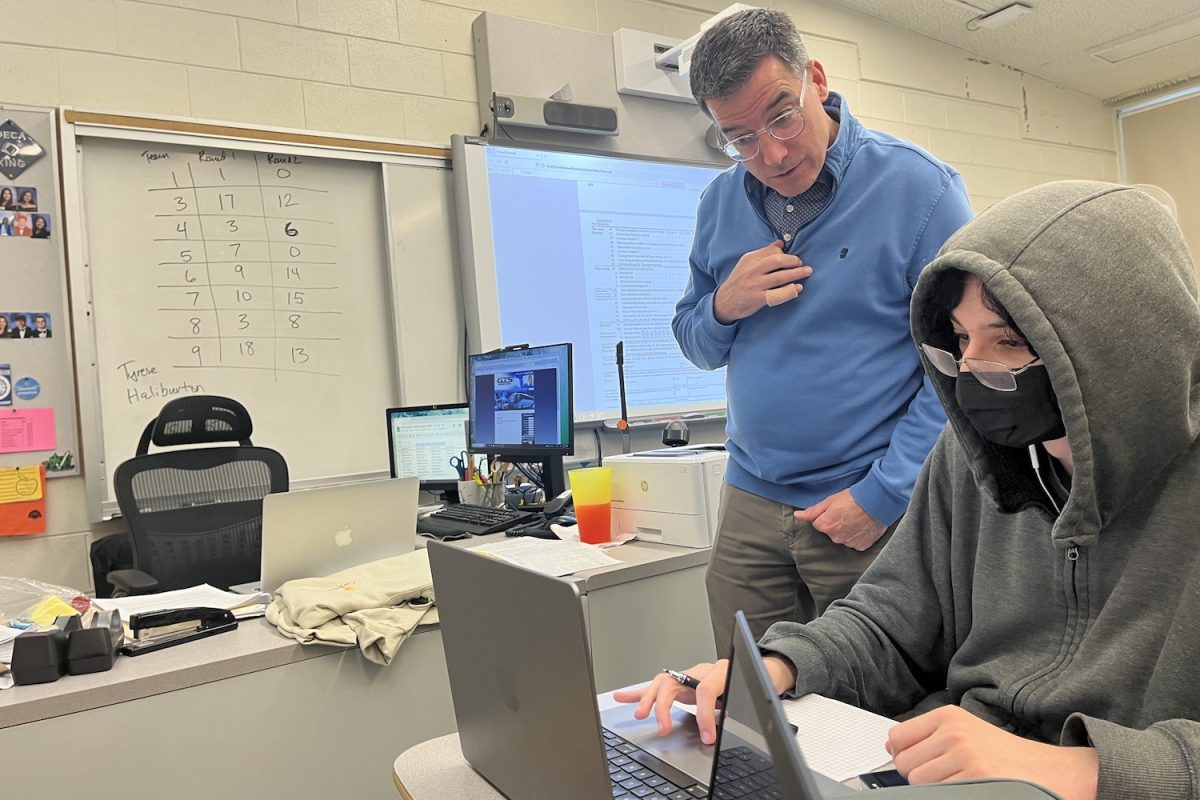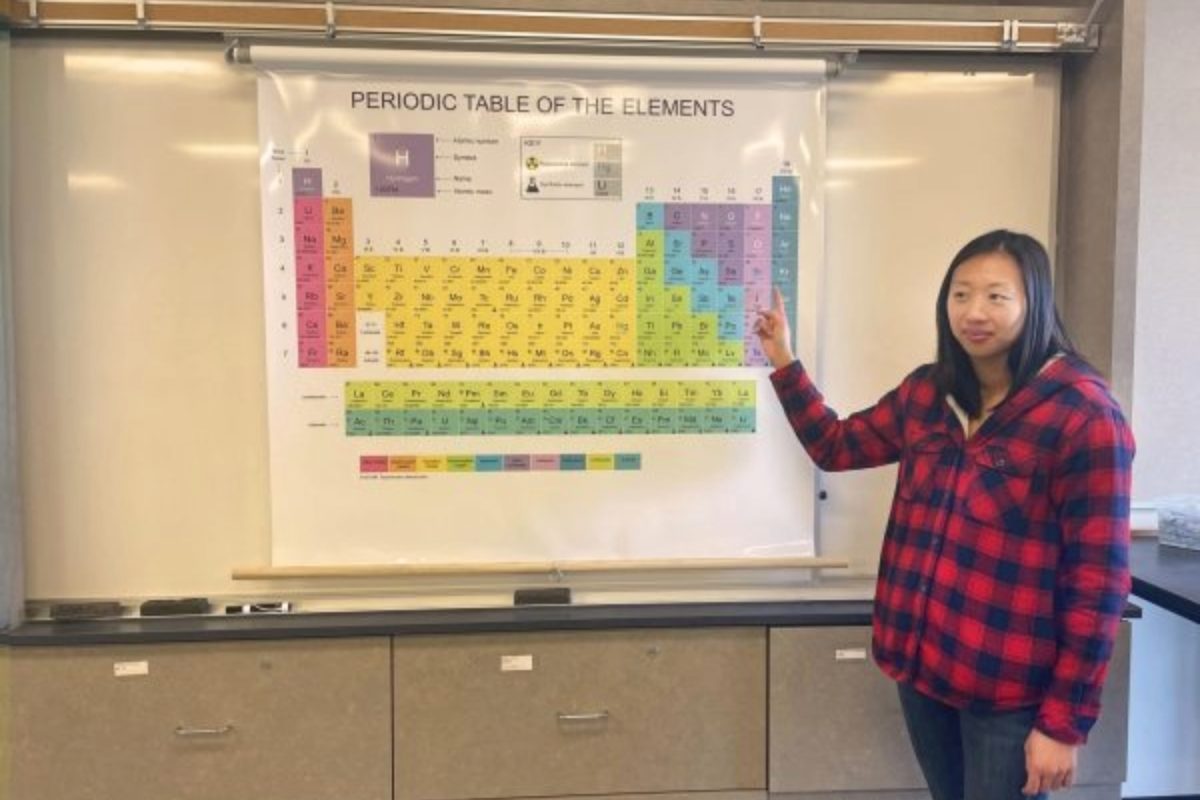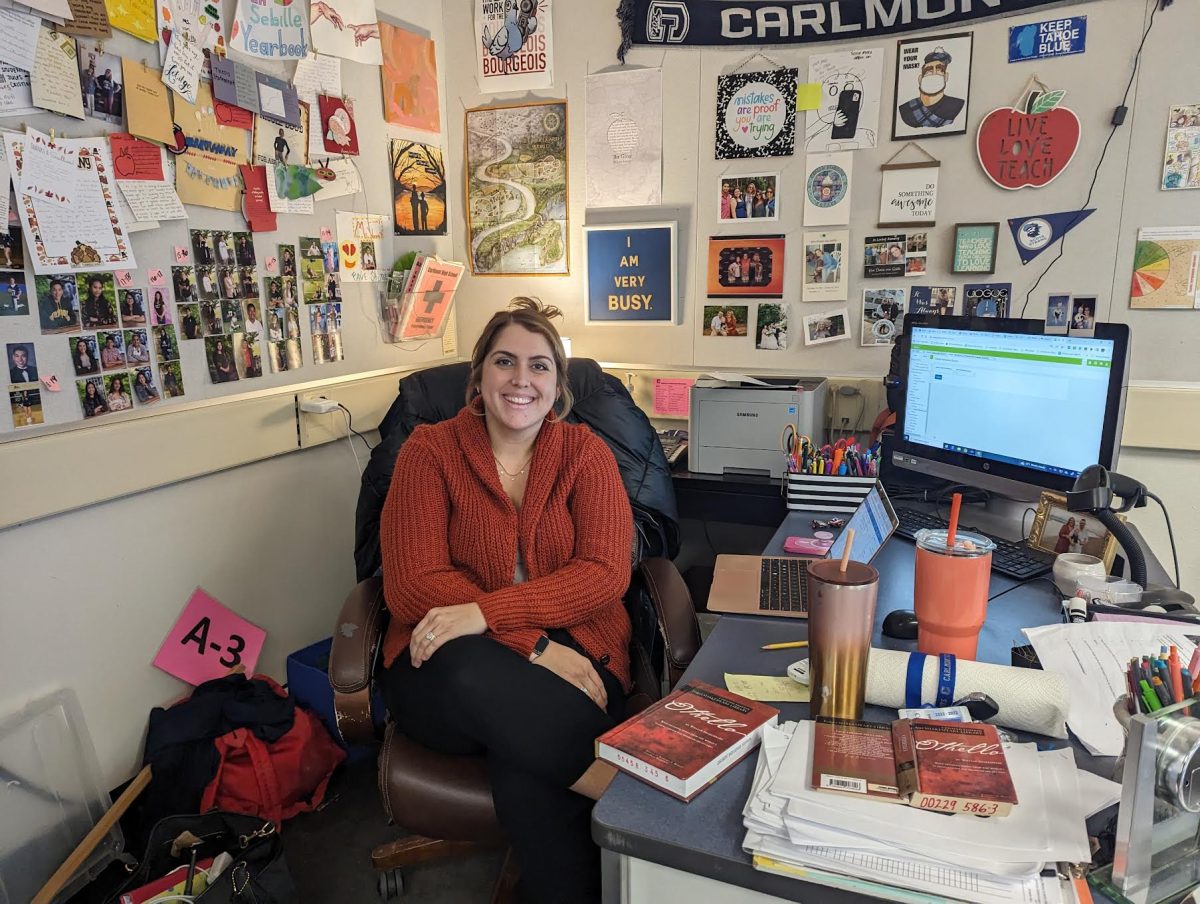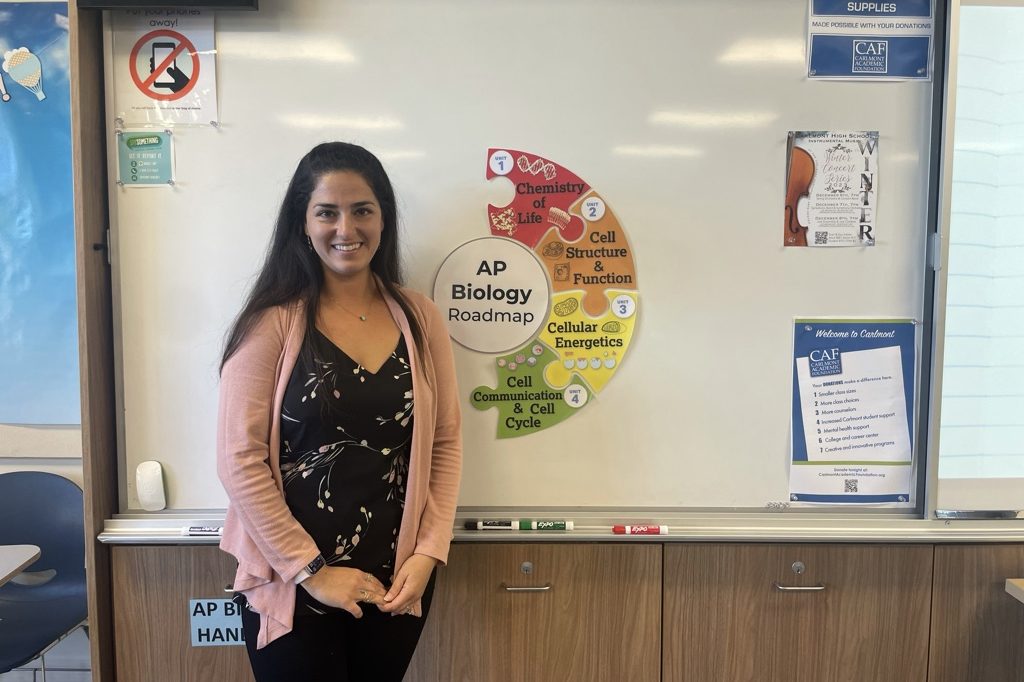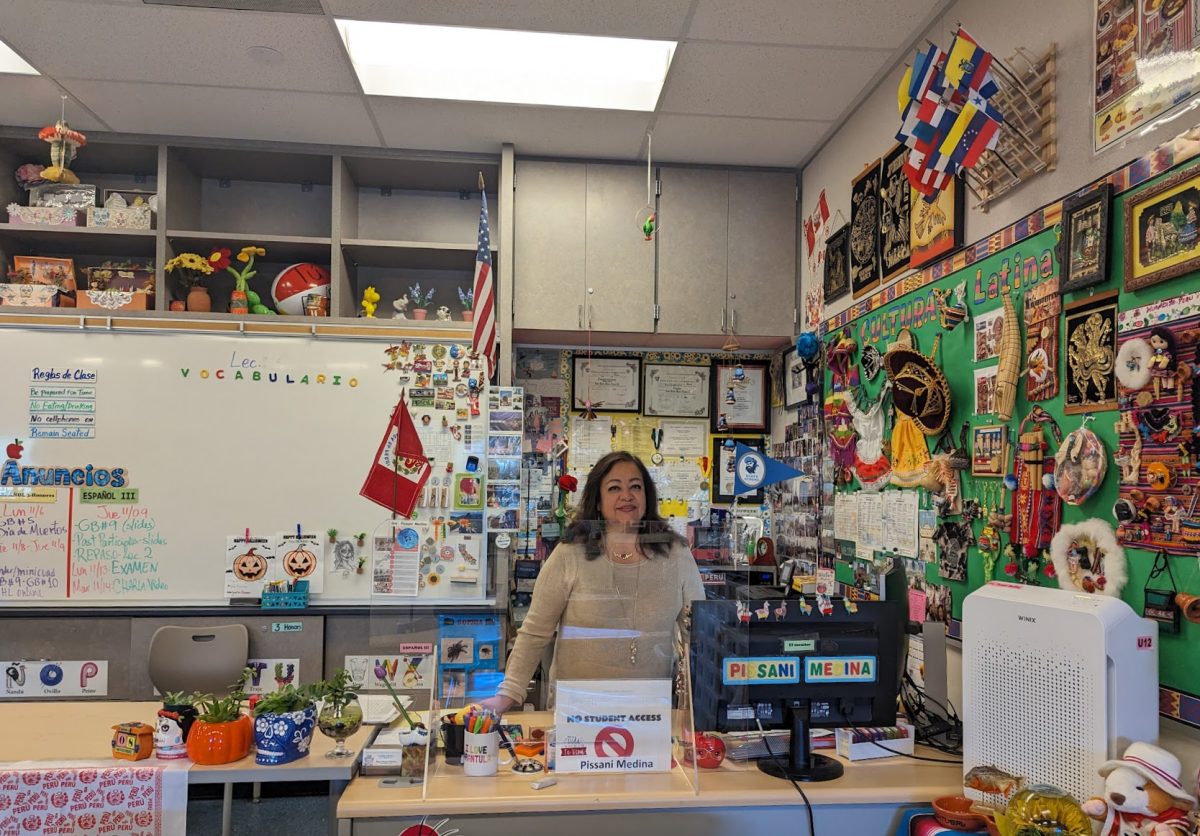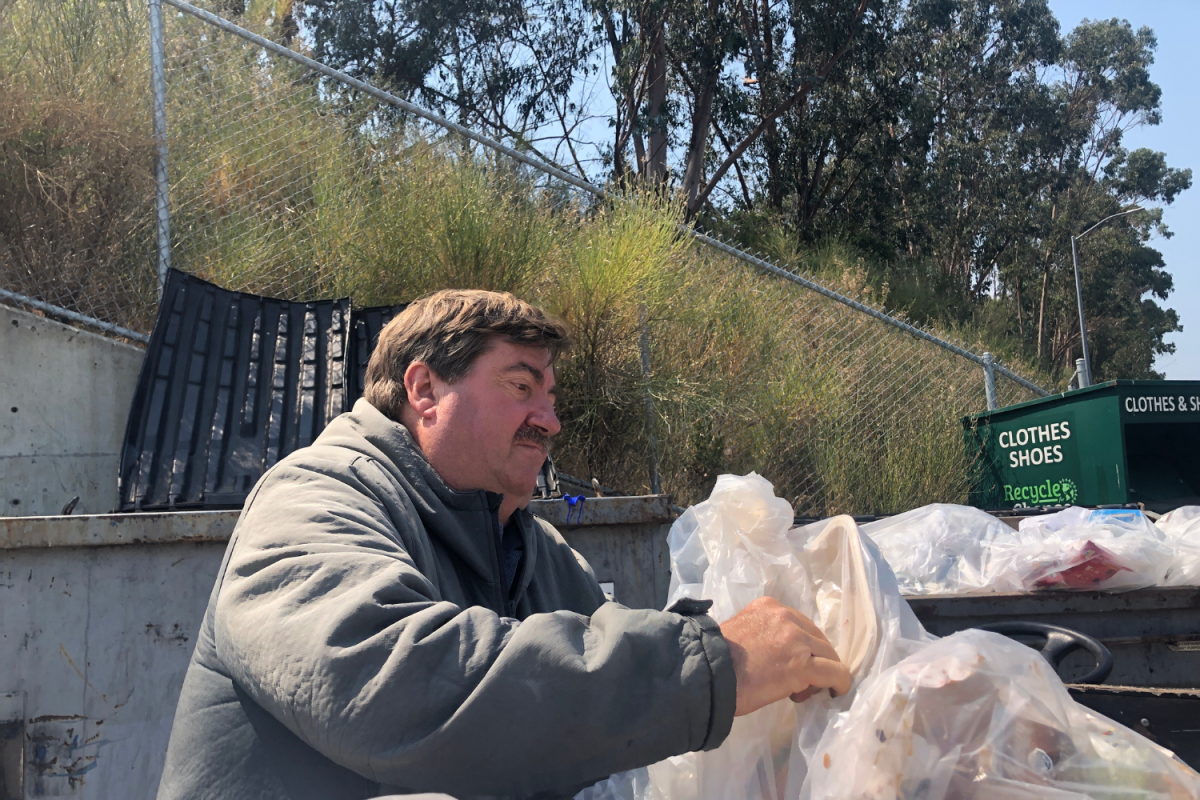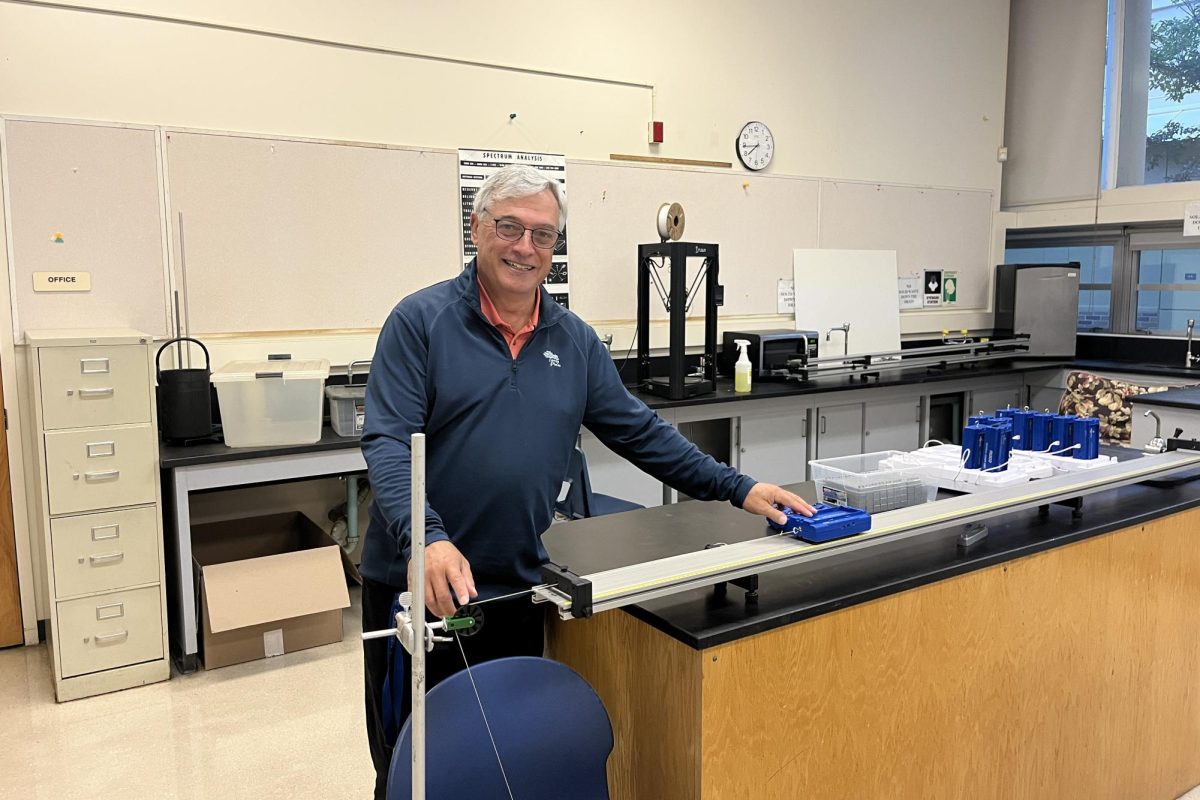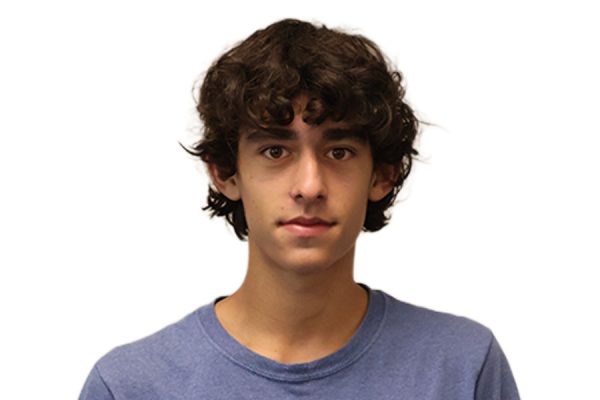While students often find educational classes dull, those in Carlmont science teacher Michael O’Neall’s classes find themselves in an environment that prioritizes student engagement to help enhance learning.
O’Neall has taught many science classes throughout his teaching career: Biology, Advanced Placement (AP) Biology, Chemistry, AP Chemistry, and AP Environmental Science.
Through his teaching, he has discovered that students learn better while participating in hands-on activities.
“I feel students understand things better when they get to work with it, especially through inquiry. Getting a problem and working through it is often better than just giving them the answer,” O’Neall said.
When he entered college, O’Neall intended to spend his life as a veterinarian. However, after learning more about what the job entailed and how unfulfilling the job might be for him, he decided to switch his career path.
Inspired by one of his high school instructors, O’Neall decided to pursue a career in teaching and education.
He would not regret this decision — being a teacher brought everything he wanted in a job. This profession allows him to be happy and creative while teaching and helping others.
“He’s always happy while he’s teaching us and seems truly invested in the topic we’re learning,” said Theo Scherer, a sophomore in O’Neall’s Chemistry class.
Part of what makes O’Neall’s job so enjoyable is his teaching style, which integrates hands-on activities rather than teaching solely through lectures and taking notes.
“My classroom is definitely more hectic than others, and I would say I like to try new ways of teaching, potentially more than I should,” O’Neall said.
Students in O’Neall’s classes believe they benefit from learning more through the labs and engaging activities they participate in during class rather than the standard lecture.
“It’s a one-of-a-kind class. We get to experiment with so many unique things, whether it’s lighting something on fire or making something new; it’s all really helpful with learning the different units,” said Riya Kadakia, a senior in O’Neall’s Chemistry class.
Even in the more advanced classes he teaches, such as AP Environmental Science, O’Neall still tries to make the class content more involvement-based for the students.
“I feel like I learn well in his class because he teaches in a way different than most teachers,” said Mateo Hu, a junior in O’Neall’s AP Environmental Science class.
Another unique aspect of O’Neall’s classroom is the “mini flex lessons” he holds. In these occasional flex period lessons, he teaches students how to use some of the technology in his classroom.
In his classroom, he has 3D printers, scanners, and other sorts of creative-based technology.
“Last year, I noticed flex was becoming more of a period for students to sit around, so I thought it would be nice to hold mini lessons to allow students to learn how to use the makerspace technology within my classroom so there would be at least some learning going on during flex if students wanted it,” O’Neall said.
These mini-lessons and his unique teaching style have received positive student reactions, which attest to how much better they can learn in a more integrative-based curriculum.
“I feel many students understand and learn things so much better when they are able to work with it,” O’Neall said.

